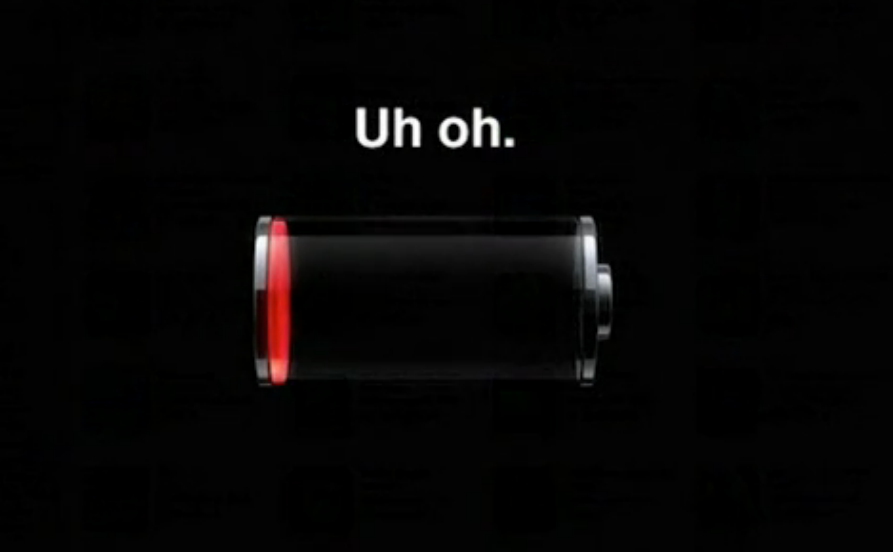It was one of life’s greatest mysteries: Why does the storage capacity of our lithium-ion battery become less and less each time we recharge it?

Several theories were proposed, but after much research, scientists at the U.S. Department of Energy have pinpointed the exact reason why this happens, and they believe this knowledge will help them finally fix the technology.
When a lithium-ion battery discharges, the lithium ions carry an electrical charge from the anode to the cathode across a nonaqueous electrolyte. This act powers the device in use, whether it’s a tablet, smartphone, etc. The problem with the system, though, is that it’s not perfectly repeatable; that is, each time the lithium ions move along their path, they cause minute changes to the electrodes’ physical structures. This damage, albeit minuscule, adds up over time, and is what ultimately ends up killing the battery’s capacity.
Two studies on the matter (exploring two different battery types) were recently published in the journal Nature Communications by a collection of teams at national Department of Energy labs, including Brookhaven, SLAC, Lawrence Berkley, and the National Renewable Laboratory.
“We discovered surprising and never-before-seen evolution and degradation patterns in two key battery materials,” Huolin Xin, a materials scientist at Brookhaven Lab's Center for Functional Nanomaterials (CFN) and coauthor on both studies, said in a press release. “Contrary to large-scale observation, the lithium-ion reactions actually erode the materials non-uniformly, seizing upon intrinsic vulnerabilities in atomic structure in the same way that rust creeps unevenly across steel.”
Xin and his colleagues used cutting-edge electron microscopy techniques in both studies to fully visualize the nanoscale chemical transformations of battery components during each step of the charge / discharge process. Specifically, they studied a nickel-oxide anode and a lithium-nickel-manganese-cobalt-oxide cathode (both are known for high capacity and cyclability) inside common coin-cell batteries running under different voltages.
During the experiments, lithium ions traveled through an electrolyte solution, moving into an anode when charging and a cathode when discharging. Everything was regulated by electrons in the electrical circuit, but during both instances, the ions’ journey and the battery structures changed very, very subtly over time.
When observing the way lithium ions reacted with the nickel oxide, scientists noticed reactions sprung up at isolated spatial points rather than evenly across the surface.
“Consider the way snowflakes only form around tiny particles or bits of dirt in the air,” he continues. “Without an irregularity to glom onto, the crystals cannot take shape. Our nickel oxide anode only transforms into metallic nickel through nanoscale inhomogeneities or defects in the surface structure, a bit like chinks in the anode's armor.”
When studying, the lithium-nickel-manganese-cobalt-oxide cathode, the scientists sought to answer three questions: how much power can be stored, at what intensity, and across how many cycles. During the study, scientists noticed that 4.7 volts caused rapid decomposition of the electrolytes and poor cycling. At 4.3 volts, though, there was a bit of a longer cycling lifetime, but it came with the caveat of lower storage capacity and more frequent recharges.
During both instances, scientists observed that the chemical evolution displayed sprawling surface asymmetries, and no profound patterns. Additionally, as the lithium ions moved across the cathode when charging, they generated a sort of rock-salt substance. This, ultimately created an electrically-insulating crust which, in turn, reduced the battery’s capacity as well.
“As the lithium ions race through the reaction layers, they cause clumping crystallization—a kind of rock-salt matrix builds up over time and begins limiting performance,” Xin said. “We found that these structures tended to form along the lithium-ion reaction channels, which we directly visualized under the TEM [transmission electron microscope – ed]. The effect was even more pronounced at higher voltages, explaining the more rapid deterioration.”
Armed with this knowledge, developers may soon be able to move forward with a better battery design.
“It may be possible to use atomic deposition to coat the NMC cathodes with elements that resist crystallization, creating nanoscale boundaries within the micron-sized powders needed at the cutting-edge of industry,” Xin said. “In fact, Berkeley Lab battery experts Marca Doeff and Feng Lin are working on that now.”
Translation: We may very well soon see the day where our devices can be used for days on end, without the need to recharge.
Story via bnl.gov
Advertisement





